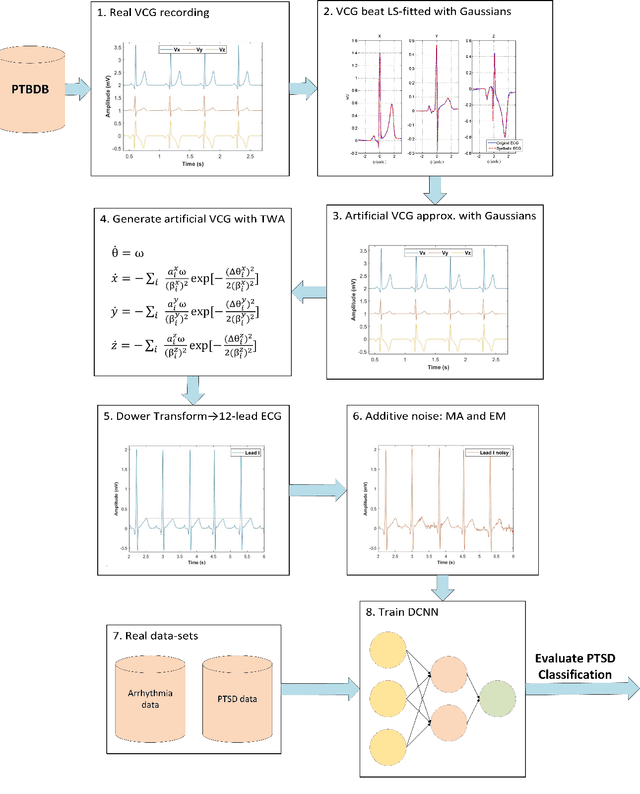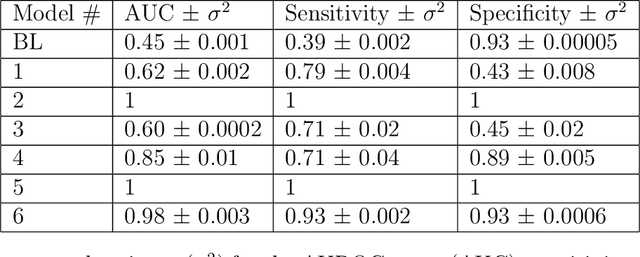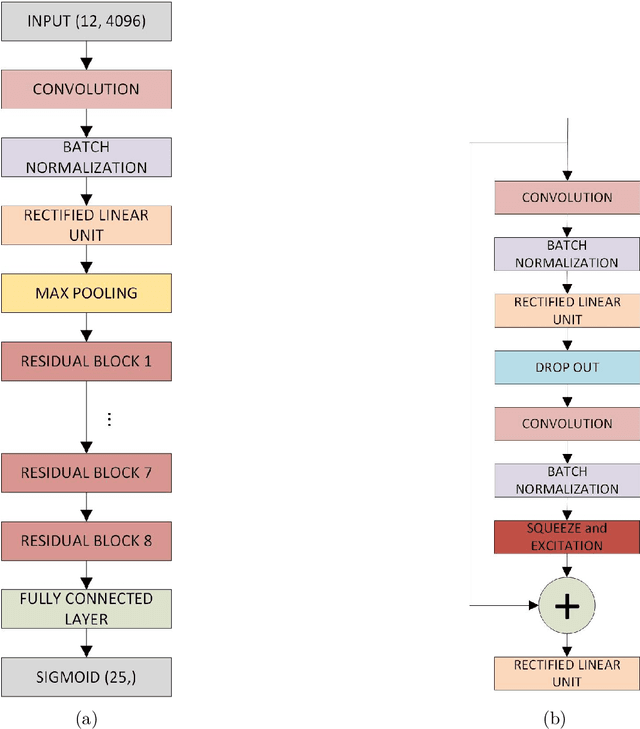Erick A. Perez-Alday
Mythological Medical Machine Learning: Boosting the Performance of a Deep Learning Medical Data Classifier Using Realistic Physiological Models
Dec 28, 2021



Abstract:Objective: To determine if a realistic, but computationally efficient model of the electrocardiogram can be used to pre-train a deep neural network (DNN) with a wide range of morphologies and abnormalities specific to a given condition - T-wave Alternans (TWA) as a result of Post-Traumatic Stress Disorder, or PTSD - and significantly boost performance on a small database of rare individuals. Approach: Using a previously validated artificial ECG model, we generated 180,000 artificial ECGs with or without significant TWA, with varying heart rate, breathing rate, TWA amplitude, and ECG morphology. A DNN, trained on over 70,000 patients to classify 25 different rhythms, was modified the output layer to a binary class (TWA or no-TWA, or equivalently, PTSD or no-PTSD), and transfer learning was performed on the artificial ECG. In a final transfer learning step, the DNN was trained and cross-validated on ECG from 12 PTSD and 24 controls for all combinations of using the three databases. Main results: The best performing approach (AUROC = 0.77, Accuracy = 0.72, F1-score = 0.64) was found by performing both transfer learning steps, using the pre-trained arrhythmia DNN, the artificial data and the real PTSD-related ECG data. Removing the artificial data from training led to the largest drop in performance. Removing the arrhythmia data from training provided a modest, but significant, drop in performance. The final model showed no significant drop in performance on the artificial data, indicating no overfitting. Significance: In healthcare, it is common to only have a small collection of high-quality data and labels, or a larger database with much lower quality (and less relevant) labels. The paradigm presented here, involving model-based performance boosting, provides a solution through transfer learning on a large realistic artificial database, and a partially relevant real database.
 Add to Chrome
Add to Chrome Add to Firefox
Add to Firefox Add to Edge
Add to Edge